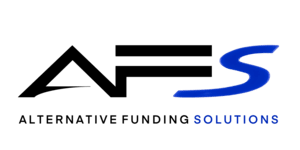Financing can make or break your business growth. Whether you need to smooth out cash flow, seize new opportunities, or handle unexpected expenses, choosing the right funding option is critical. Two of the most common choices revolving lines of credit and business loans offer different benefits depending on your needs. This guide will help you understand the differences so you can make the smartest financial decision.
- Summary
- The article explains the key differences between a revolving line of credit and a business loan, helping business owners choose the best financing option for their needs.
- A revolving line of credit offers flexible, ongoing access to funds, making it ideal for managing cash flow, handling emergencies, and covering recurring expenses.
- Business loans provide a lump sum with fixed repayments, making them better suited for large, one-time investments and predictable budgeting.
- The blog compares the pros and cons, qualification requirements, and best-use cases for each financing option.
- Key takeaway: Evaluate your business’s financial needs, repayment capacity, and growth plans to select the most suitable funding solution.
What is a Revolving Line of Credit?
A revolving line of credit is a flexible financial tool that allows businesses to borrow funds up to a preset limit, repay the borrowed amount, and borrow again as needed. Similar to how a credit card works, but designed specifically for business use, it provides a continuous line of credit that replenishes as you pay down the balance.
How It Works
- Access funds as needed, up to your credit limit.
- As you repay, your available credit replenishes.
- Interest is charged only on the amount you borrow, not the full limit.
Best For
- Managing cash flow fluctuations
- Covering unexpected expenses
- Funding small, ongoing projects
Example A landscaping company with seasonal revenue might use a revolving line of credit to cover payroll during slow winter months.
What Are Business Loans?
A business loan is a lump sum of money borrowed by a business that is repaid over a set term with fixed monthly payments. Business loans come in various forms, including term loans, SBA loans, and equipment financing. The main advantage of a business loan is its fixed repayment schedule, providing businesses with predictable monthly payments.
How it Works:
- Apply for a specific loan amount.
- Upon approval, receive funds upfront.
- Repay the loan in predictable installments.
Best For
- One-time large investments (equipment, expansion, real estate)
- Businesses with a clear plan for using funds
- Those needing predictable monthly payments
Example: A restaurant opening a second location might take out a business loan to fund renovations and equipment purchases.
Pros and Cons of Revolving Line of Credit vs. Business Loans
Revolving Line of Credit | Business Loan | |
Pros | • Flexible access to funds • Pay interest only on what you borrow • Fast approval and funding | • Fixed, predictable monthly payments • Lower interest rates for qualified borrowers • Ideal for large, one-time investments |
Cons | • Variable interest rates • Can get expensive if balances carry over • Risk of over-borrowing | • Less flexible once approved • Stricter qualification requirements • Longer approval process |
What is the Difference Between a Line of Credit and a Business Loan?
To better understand the differences between these two financing options, let’s take a closer look at how they compare in terms of flexibility, repayment, interest rates, and best-use cases.
Feature | Revolving Line of Credit | Business Loan |
Access to Funds | Borrow, repay, and borrow again | One-time lump sum |
Repayment | Flexible — pay as you borrow | Fixed monthly payments |
Interest Rates | Usually variable | Often fixed (sometimes variable) |
Flexibility | High — great for recurring needs | Low — best for defined uses |
Best For | Cash flow gaps, emergencies, ongoing expenses | Large purchases, expansions |
Approval Time | Fast — often days | Slower — can take weeks |
Which is Better for Small Businesses: Line of Credit or Loan?
Choosing between a revolving line of credit and a business loan depends on your goals, cash flow, and funding needs:
Choose a Revolving Line of Credit if:
- You need flexibility to borrow, repay, and borrow again
- You want fast access to funds for short-term or unexpected expenses
- You plan to borrow smaller amounts over time instead of a lump sum
- Your cash flow is seasonal or unpredictable
Choose a Business Loan if:
- You’re funding a large, one-time investment like equipment, property, or expansion
- You prefer predictable, fixed monthly payments for easier budgeting
- You have a clear plan for how the funds will be used
- You want access to larger amounts of capital upfront
How to Qualify for a Revolving Line of Credit or Business Loan
Qualifying for a business loan or a revolving line of credit depends on several factors, including your credit score, business financials, and how long your business has been operating. Below is a breakdown of the eligibility criteria for each:
Eligibility for a Business Loan:
- Credit Score: Lenders typically require a credit score of 650 or higher. A higher score can increase your chances of approval and may lead to better loan terms (e.g., lower interest rates).
- Revenue: Businesses must demonstrate consistent revenue and profitability. Lenders want to see that your business has been generating sufficient cash flow to manage monthly loan payments without financial strain.
- Business History: Many lenders prefer businesses that have been operating for at least 2 years. This provides evidence that your business has a track record of stability and success. Newer businesses may find it more challenging to qualify for a loan without a proven history.
- Debt-to-Income Ratio: Some lenders assess your debt-to-income ratio to ensure your business can handle additional debt. A lower ratio shows better financial health and a stronger ability to repay the loan.
- Collateral: Depending on the type of loan, lenders may require collateral (e.g., equipment, real estate) to secure the loan. This is more common with secured loans.
Eligibility for a Revolving Line of Credit:
- Credit Score: A good credit score (usually 650 or above) is also needed for a line of credit, but some lenders may be more lenient.
- Business Financials: Lenders will assess your business’s revenue, expenses, and overall financial health.
- Time in Business: Lenders may look for businesses that have been operating for at least 6 months.
FAQs
Q. What is the difference between a revolving line of credit and a term loan?
A revolving line of credit offers flexible borrowing, while a term loan provides a lump sum with fixed repayments.
Q. Can I use a business loan for working capital?
Yes, but it’s typically better suited for large purchases. A line of credit may be better for working capital needs.
Q. What are the typical interest rates for business loans and lines of credit?
Business loans typically have lower interest rates, ranging from 6% to 15%, while revolving lines of credit can have rates ranging from 7% to 25%, depending on your creditworthiness.
Q. How long does it take to get approved for a business loan or line of credit?
Business loans may take a few weeks to process, while lines of credit can often be approved in as little as a few days.
Conclusion
Choosing between a revolving line of credit and a business loan depends on your business’s unique goals and financial needs. If you want flexible, ongoing access to funds, a line of credit could be the ideal solution. But if you have a clear, one-time investment in mind and prefer predictable monthly payments, a business loan may be the better fit.
At Alternative Funding Solutions, we help business owners secure the right financing options whether it’s a flexible line of credit or a structured loan. Reach out today to explore the best solution for your business and take the next step toward growth.

